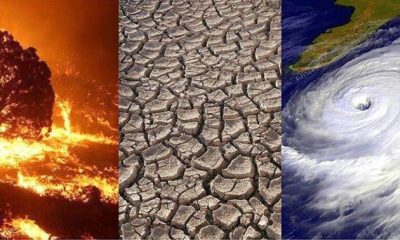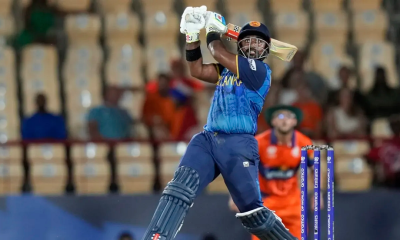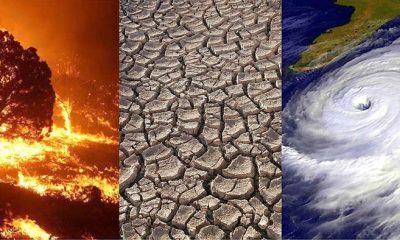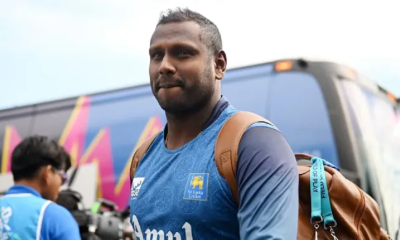Opinion
TImely action must be taken to preserve Buddhism in Sri Lanka
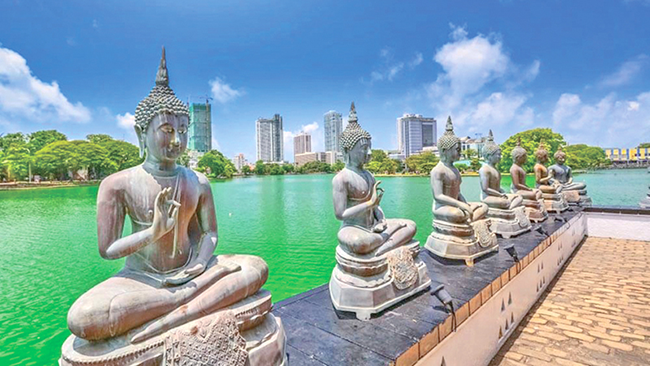
As reported on the first page of Sunday Island (June 4) it is indeed very praiseworthy for the government authorities to have taken timely action to safeguard the most venerated Bo tree in the world. It is both an object of worship and symbol of national sovereignty on the majority Buddhist island of 22 million people. It is a well established fact that a sapling of the sacred Sri Maha Bodhi was brought to Ceylon by none other than Indian Emperor Ashoka’s daughter Sangamitta Maha theri, who established the Bhikkuni sasana here.
However it is sad to note that presently the Bhikkuni sasana is not given the due recognition it deserves in our country, though it is common knowledge that our Buddha sasana comprises of Bhikku, Bhikkuni, upasaka and upasika. It is very difficult to fathom why the government authorities are not issuing Bhikkuni Identity cards, while the Bhikkus even though some break the vinaya rules in public from time to time are allowed to continue with their Bhikku identity cards. Why the double standard? Therefore it is of great importance that Buddhists rise up to the occasion and demand that government issue Bhikkuni Identity cards and give them the due recognition they deserve to have in our society.
If timely action is not taken to rectify the situation to protect the Bhikkuni Sasana, it will face the same fate as the Dhamma Chakraya, which symbolizes the Eight Fold Path preached by The Buddha in his first sermon to the Pasvaga mahanunun, after attaining Buddha hood. The ancient Dhamma Chakraya is correctly depicted in all Emperor Ashoka’s pillars which were erected in Buddhist places of worship in India, under his direction and guidance. Needless to say it is in the shape of a cart wheel with eight spokes connecting to the outer circle depicting the Eight Fold Path. It was also accepted as the Buddhist symbol here after Emperor Ashoka’s son Arahat Mahinda Threra introduced Buddhism to Sri Lanka.
However, presently due to unknown reasons the Dhamma Chakraya has taken the form of the helm, (the wheel connected to the rudder to steer a ship), with projections from the outer circle. Presently 90% of the Buddhist establishments, TV channels and print media use this wheel as the symbol of Buddhism which is an incorrect depiction of the original Dhamma Chakraya. Thus it is equally important to take timely action to rectify this to contribute towards stability and continuity of the Buddha Sasana for posterity.
R. W. W.
Opinion
Power corrupts …

Only America could re-elect an extremist like Trump.
There are planned protests across the US today against President Donald Trump and his adviser billionaire Elon Musk.
More than 1,200 “Hands Off!” demonstrations have been planned by more than 150 groups – including civil rights organisations, labour unions, veterans, fair-election activists and LGBT+ advocates.
This includes a planned protest at the National Mall in Washington as well as locations in all 50 states.
They are in opposition to Trump’s actions: slashing the federal government, his handling of the economy and other issues.
Musk has played a key role in Trump’s second administration, leading efforts to downsize the federal government as head of the newly created Department of Government Efficiency.
Organisers hope these demonstrations will be the largest since Trump came to office.
Speaking of Musk, let’s see how Trump’s second term has impacted America’s richest men …?
Countries across the globe are planning their response, or lack thereof, to Donald Trump’s tariffs.
China responded to Trump’s 34% tariff with its own levy of the same percentage on US imports.
According to state news agency Xinhua, China has accused the US of using tariffs “as a weapon” to suppress Beijing’s economy.
The country’s foreign ministry added that the US should “stop undermining the legitimate development rights of the Chinese people”.
It also warned there were no winners from and no way out for protectionism.
China also claimed that the US tariffs violated World Trade Organization rules – rules it itself has broken a number of times.
Professor Wang Wen, trade expert at the Chongyang Institute for Financial Studies, spoke from Beijing to Kamali Melbourne. He outlined why he believed the tariffs would eventually benefit China, and why Beijing would “never yield” to the US president.
“The basic strategy of China’s tariff policy against Trump is to count on reciprocal rules and defend China’s national interest and dignity. China will never yield to Trump on the issue of tariff war,” he said.
However, Xi Jinping is no democratic leader either, given to expansionism by hook or crook.
China’s booming economy has opened up many opportunities to achieve its sinister objectives – massive investments which weaker economies fall into and become easy prey.
Sri Lanka is no exception. Caught in the middle are the smaller nations who are confused and worried how best to stay alive.
Sunil Dharmabandhu
Wales, UK
Opinion
Praise to ex-President Ranil Wickremesinghe!
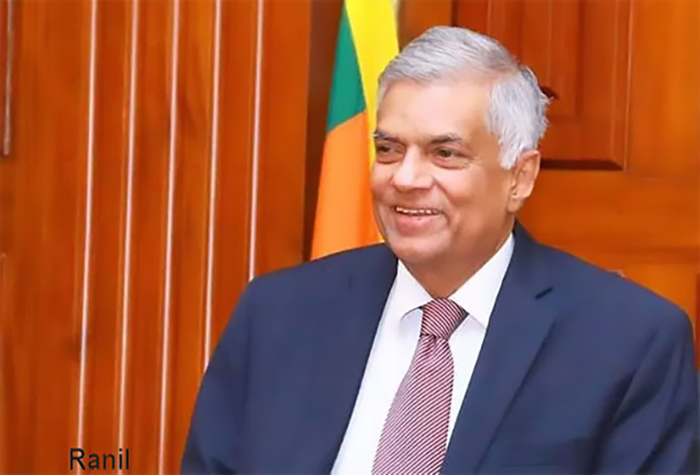
In the despicable absence of an urgent practical response on the part of the JVP-Anura Kumara Dissanayake-led NPP government to the devastating 28th March earthquake in Myanmar, ex-president Ranil Wickremesinghe has made a very timely and sensible proposal regarding how to assist our disaster stricken fellow humans in that country. ex-president Wickremesinghe! Thank you very much for saving, at least to some extent, Sri Lanka’s still unsullied reputation as a sovereign state populated by a most humane and hospitable people. You have again demonstrated your remarkable ability to emerge as an able state level troubleshooter at critical moments, this time though, just by being a mentor. It is a pity that you don’t think of adopting a more universally acceptable, less anglophile version of principled politics that will endear you to the general electorate and induce the true patriots of the country to elect you to the hot seat, where you will have the chance to show your true colours!
The ordinary people of Myanmar (formerly called Burma) are remarkably humble, polite and kind-hearted just like our fellow ordinary Sri Lankans. There’s a natural cultural affinity between us two peoples because we have been sharing the same Theravada Buddhist religious culture for many centuries, especially from the 4th century CE, when Buddhism started making gradual inroads into the Irrawaddy Valley through trade with India. Whereas Buddhism almost completely disappeared from India, it flourished in Sri Lanka and Burma. Nearly 88% of the 55 million present Myanmar population profess Buddhism, which compares to 72% of the 22 million population in Sri Lanka. Wickremesinghe has been mindful enough to take a glance at the historicity of close Myanmar-Sri Lanka relations. And he didn’t mince his words while giving some details.
At the beginning of his statement in this connection (which I listened to in a video today, April 1, 2025), Ranil Wickremesinghe said that our government has expressed its sorrow (but little else, as could be understood in the context). Countries near and far from Myanmar including even partly affected Thailand, and India, China, and distant Australia have already provided emergency assistance. Referring to the special connection we have with Myanmar as a fellow Theravada Buddhist country, he said that both the Amarapura and Ramanna nikayas brought the vital higher ordination ritual from there. We must help Myanmar especially because of this historic relationship.
When an earthquake struck Nepal, the birthplace of the Buddha, in 2015, we sent an army team to assist. On that occasion, Sri Lanka was the second country to provide relief, India being the first, with China becoming the third country to come to Nepal’s help. Today, India, Thailand, Malaysia, China and Australia have dispatched aid by now. Last year Sri Lanka gave 1 million US Dollars for Gazan refugees. We need to take a (meaningful) step now.
Wickremesinghe proposed that the army medical corps be sent to Myanmar immediately to set up a temporary hospital there. The necessary drugs and other materials may be collected from Buddhist and non-Buddhist donors in Colombo and other areas.
Emphasising the ancient friendly relationship between Sri Lanka and Myanmar, Wickremesinghe mentioned that King Alaung Sithu I (of the Pagan Dynasty, 1090-1167 CE) sent help to (Prince Keerthi who later became) King Vijayabahu the Great (1055-1110 CE) to defeat and drive away from the island the occupying Cholas after a 17 year long military campaign. The grateful Lankan monarch Vijayabahu, during his reign, offered the Thihoshin Pagoda (name meaning ‘Lord of Lanka’ pagoda, according to Wikipedia) and a golden Buddha image to the Myanmar king. (This pagoda is situated in Pakokku in the Magway region, which is one of the six regions affected by the recent earthquake. I am unable to say whether it remains undamaged. Though the monument was initiated during Vijayabahu’s lifetime, the construction was completed during the reign of King Alaung Sithu I {Wikipedia}).
Wickremesinghe, in his statement, added that it was after this that a strong connection between Sri Lanka and Myanmar started. In some Buddhist temples in Myanmar there are paintings by ancient Lankan painters, illustrating Jataka stories (Stories relating to different births of Buddha). Among these, Wickremesinghe mentioned, there is a painting depicting the duel between (the occupying Chola king of Anuradhapura) Elara and (his young native challenger from Ruhuna prince) Dutugemunu. (Although Wickremesinghe did not talk about it, a fact well known is that there is a copy of our Mahavamsa in Myanmar. In reporting the ex-president’s speech, I have added my own information and information from other sources. I have put this within parentheses)
Let’s hope President Anura Kumara Dissanayake is wise enough to derive some benefit from his predecessor’s mentoring in the name of our beloved Motherland.
Rohana R. Wasala
Opinion
Assisting solar power debate in Cabinet

Authors: Directors of Solar Village SDG CIC
www.solarvilllagesdg.org
I.M. Dharmadasa (Emeritus Professor), Nilmini Roelens (Solicitor) and Saroj Pathirana (Journalist)
The purpose of this article is to inform the Cabinet discussion on Solar Power proposed by the Ceylon Electricity Board (CEB)
Net metering and the Prosumer
The CEB has put forward a motion to the Sri Lankan Cabinet which proposes to reduce the unit price payable under the various net metering schemes to the “prosumer” (the owner of a solar panel system).
A prosumer is a blend of producer and consumer, referring to individuals who both create and consume. This is based on the notion that most producers of electricity through self-owned solar panels generate more than double their own needs as consumers. It thus enables the prosumer to connect to the national grid and receive money on a pay back scheme from the CEB for the excess electricity they produce.
What is this debate about?
Currently there are four schemes.
The Public Utilities Commission of Sri Lanka explains the various schemes involving roof -top solar solutions thus under a heading published in October 2023 – Rooftop Solar PV Connection Schemes. The two most noteworthy schemes are the Net plus and the Net plus plus schemes.
https://www.pucsl.gov.lk/rooftop-solar-pv-connection-schemes/
Through the NET Plus Plus Scheme CEB regards the prosumer as a mini power plant holder which maximises roof top generation well beyond the prosumer’s own needs making maximum use of extra roof space. This would work well for schools and companies with large buildings. CEB used to pay Rs. 37 per unit to the prosumer for up to 500kW. This unit price was available between 26 October 2022 to 1 July 2024. However, as of 1 July 2024 the unit price was reduced to Rs. 27.
We understand the new CEB proposal to the cabinet is to scrap this scheme altogether.
In relation to the Net Plus scheme which is the more accessible and popular scheme for ordinary householders the current CEB proposal is to reduce the unit price even further to Rs. 19 for solar power systems generating less than 20 kW, whilst for those generating between 20 – 100 kW the unit pay back will be Rs.17 and those generating between 100 – 500 kW will receive Rs.15 per unit.
The installation costs of a 5-kW solar panel is now around Rs 1.0 million. The cost of solar panels has in fact come down over the years and the units are recyclable. The lifespan of a solar unit is expected to be in the region of 22 to 25 years. There are now over 300 active solar companies in Sri Lanka. This is a rapidly growing sector with the prospect of generating employment for tens of thousands of young Sri Lankans for many years to come as technicians, administrators and entrepreneurs. The potential advantages for the economy are extensive Sri Lanka’s growth of the renewable energy sector using freely available sunshine available virtually all year-round given the geographical proximity to the equator
It is not just about reducing the electricity bills of the prosumer. This green energy solution would also mean we avoid the heavy annual cost of the import of fossil fuels into Sri Lanka which very seriously affects its balance of payments each year. The unwarranted need for environmentally damaging energy sources like coal, diesel and nuclear (with its inherent dangers and enormous costs), etc., will lead to a meaningless downward spiral of more debt, enhanced climate risk and pollution.
The intermittency argument
The argument of intermittency of renewables is a misguided premise. Some may argue that seasonal variations of renewables such as solar or hydro power may make them unreliable. This can very easily be remedied by investment in a smart grid. This can be done by upgrading the existing transformers and grid lines. A policy decision would be required at cabinet level to advise the CEB to reinvest any profits for this purpose.
Green Hydrogen is the future
Solar generated power can be harnessed to invest in Green Hydrogen solutions which could mean that rather being an importer of fossil fuels, that the rest of the world is turning away from, Sri Lanka becomes an exporter of green hydrogen to countries in the northern hemisphere where sunshine is scarcer.
Picture what it could do to the Sri Lankan economy if, rather than being dependent on imports of polluting and expensive fuel which can exacerbate the climate crisis, we transform our island into an eco-tourist paradise and become an exporter of clean green hydrogen.
Green hydrogen is created by splitting water molecules into its components of Hydrogen and Oxygen. The hydrogen gas can be compressed and stored for export. The minimum voltage required for splitting the water molecule is about 1.50 Volts DC and scaling up and commercialisation is happening throughout the world currently.
Rebranding Sri Lanka as a renewable energy island
To limit imports of fossil fuels for automobiles, a policy decision at governmental level could provide concessions for electric cars for solar roof owners and encourage the use of solar powered charging stations. The annual cost of imports of petrol and diesel would reduce overtime as Sri Lanka encourages clean and green electric cars.
Whilst the rest of the world is turning to renewable energy with alacrity, Sri Lanka ought not turn to fossil fuel imports in breach of its commitments to the international community.
In 2015 Sri Lanka signed up to the United Nations 2030 Agenda. Ahead of the Paris Summit Sri Lanka set out its climate action plan which the UN Framework Convention on Climate Change (UNFCCC) stated “Countries have agreed that there will be no back-tracking in these national climate plans, meaning that the level of ambition to reduce emissions will increase over time.”
(https://unfccc.int/news/sri-lanka-submits-its-climate-action-plan-ahead-of-2015-paris-agreement)
Sri Lanka has a real opportunity to rebrand itself as a renewable energy island. This means moving towards the commitments made at UNFCC – COP25, Sri Lanka Country Statement in Madrid in December 2019:
“Sri Lanka recognises the importance of the role of COP and highlights the need to take effective and definitive steps for finalising the follow up actions of the Paris Agreement.
The rise of the global mean temperature and the resulting changes have created adverse impacts on key sectors of Sri Lanka, such as agriculture, forestry, biodiversity, marine and fisheries, tourism and energy (hydro power) sectors, leading to disastrous effects on its people, ecosystems and economy. According to official statistics from 2008 to 2018, droughts, floods and landslides have affected over 15 million people, and losses and damages resulting from these calamities have been borne by Sri Lanka’s national budget… Sri Lanka is committed to inclusive and participatory climate actions to ensure that affirmative actions are taken to address the vulnerabilities of climate change.“https://unfccc.int/sites/default/files/resource/SRILANKA_cop25cmp15cma2_HLS_EN.pdf
Why is reduction of the unit price a very regressive, harmful measure?
The reduction will discourage the use of clean renewable energy in favour of higher imports and a move towards dangerous and expensive sources of energy.
The consequences of a reduction of unit price will thus be far reaching beyond the loss to the prosumer.
Lithium battery storage options mean that even when the sun stops shining at night or in the wet season the solar panel produced energy can continue to be used. It is very likely that current solar companies will need to diversify to survive and move towards lithium battery storage solutions and inverters so that year long, 24-hour access to energy is available without recourse to the national grid for their customers. As individuals and institutions go off grid CEB’s income will dwindle in the long run as the private sector takes over.
Recommendations to the cabinet
We make the following recommendations to the Government of Sri Lanka:
(i) At present we have a fragile grid, and the CEB should strenuously endeavour to minimise energy leakages and improve the grid by replacing weak transformers and grid lines. Such continuous improvements will enable us to move towards a “Smart Grid” enabling absorption of large amounts of intermittent renewable energies like wind and solar.
(ii) At present we have ~1500 MW of renewables installed, comparable to hydroelectricity. When solar power is plentiful during the daytime, hydro power can be reduced simply by controlling the water flow without any technical difficulties. This is one way of assuring energy storage while balancing the grid energy.
(iii) Another solution for this is pumped-water storage plants. It is important to follow through with such measures which have now been under discussion for some time.
(iv) The future energy carrier is green hydrogen (GH) produced by electrolysing water using both wind and solar. A global Green Hydrogen revolution is taking place, and GH can be used to run vehicles using fuel cell technology. Trains and buses are being run with GH technology in Europe. GH can also be converted into ammonia and methanol to produce fertilizer and be applied for other industrial uses. Sri Lanka must not be left behind.
(v) GH can be stored and burned whenever energy is needed, especially during nighttime. Only water vapour is produced during the burning of hydrogen without any air pollution. Sri Lanka already has the Sobhadanavi LNG plant which is almost ready to use. Since we must import LNG to run this power plant, we should be able to reduce the LNG import bill by half by mixing the natural gas (methane) with the locally produced GH. See here:
(vi) Local solar energy companies should install high quality solar energy systems and provide “after sale services” in accordance with their guarantees.
(vii) PV companies should also be encouraged to collaborate with local electronics departments to manufacture accessories like inverters and other components needed for these systems, creating new jobs, and reducing the total cost of the systems.
(viii) In addition to grid tied solar roofs, the PV companies should also market hot water systems and water pumping systems. As a country reliant mainly on agriculture, solar water pumping and drip irrigation systems, especially in the dry zone, provide a huge potential for increasing food production.
(ix) Battery capacities are improving, and costs are coming down. This can be encouraged pending replacing grid infrastructure.
(x) It is important to increase public awareness through government funded campaigns. The public should recognise the dangers of using imported and expensive fossil fuel and the importance of using renewables.
(xi) The public should also recognise the advantages of having a clean environment, health benefits and enhanced living conditions.
(xii) A community development project called “Solar Village” to empower needy communities, accelerate their sustainable development, reduce poverty and take climate action has been developed over the past two decades. Seven solar villages have been established and funding for three more solar villages have been obtained.
Solar Village SDG, a UK based community interest company has been established to encourage the use of renewables and to pilot programmes which will support sustainable development goals. This includes providing access to a quality education for all via smart rooms which will be set up alongside solar villages in rural schools. Such initiatives could be encouraged and supported.
-

 Business2 days ago
Business2 days agoDaraz Sri Lanka ushers in the New Year with 4.4 Avurudu Wasi Pro Max – Sri Lanka’s biggest online Avurudu sale
-

 Features1 day ago
Features1 day agoStarlink in the Global South
-

 News7 days ago
News7 days agoBid to include genocide allegation against Sri Lanka in Canada’s school curriculum thwarted
-

 Business3 days ago
Business3 days agoStrengthening SDG integration into provincial planning and development process
-

 Business2 days ago
Business2 days agoNew SL Sovereign Bonds win foreign investor confidence
-

 Sports4 days ago
Sports4 days agoTo play or not to play is Richmond’s decision
-

 Features1 day ago
Features1 day agoModi’s Sri Lanka Sojourn
-

 Latest News6 days ago
Latest News6 days agoIPL 2025: Rookies Ashwani and Rickelton lead Mumbai Indians to first win


